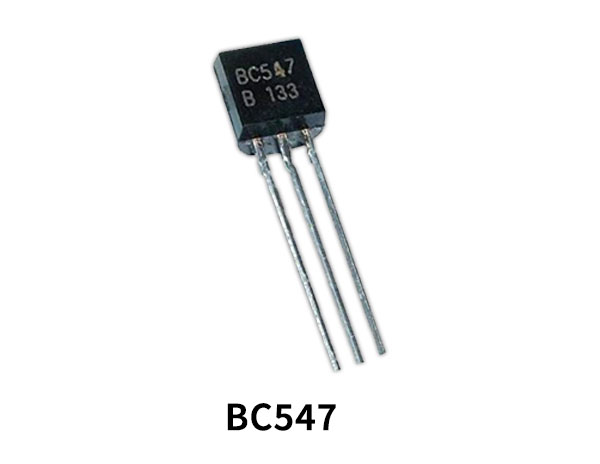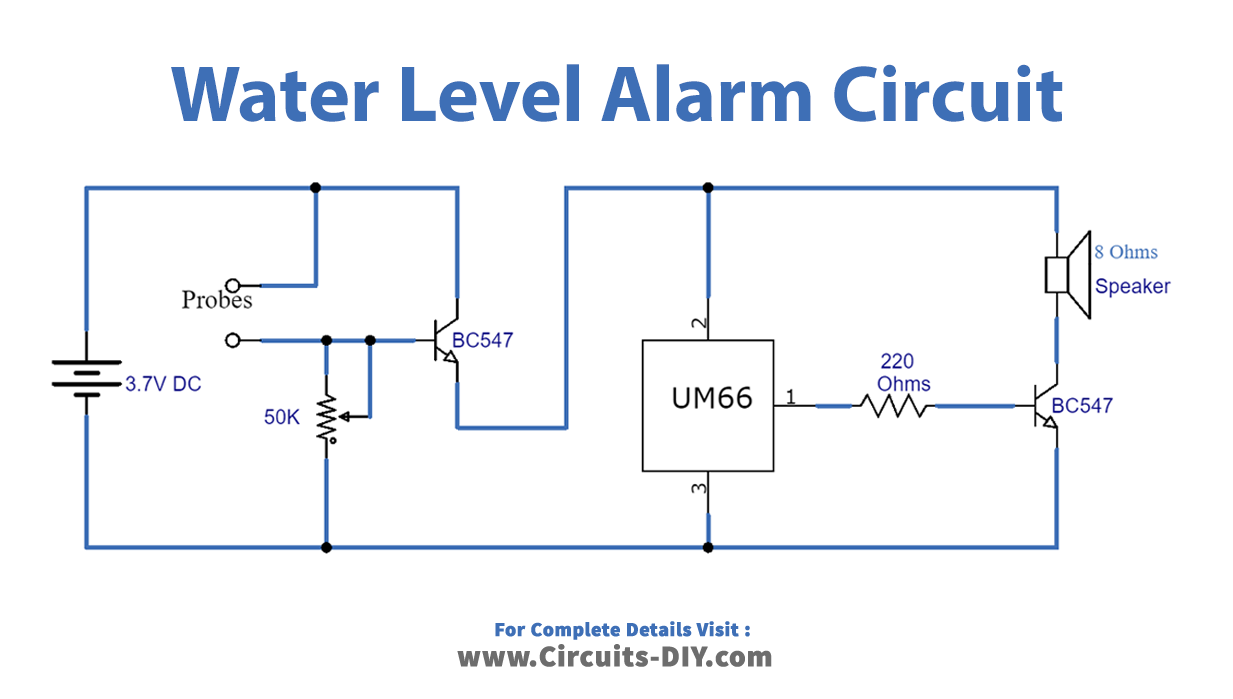We all have overhead tanks in our houses for storing water and it makes it difficult to identify the level of water. This can lead to some difficulties or overflow of water which wastes your energy and water both. To solve these problems we have made a Water Level Alarm circuit. It is a simple mechanism that detects the level of water and gives a melodious alarm sound when the probes detect water. The cost of this circuit is low and it can be used for any kind of water container like overhead water tanks, swimming pools, boilers, etc.
This circuit uses a CMOS Melody generator IC UM66. This IC is very famous for generating musical sound and comes in a TO-92 transistor package. It has an inbuilt tone and beat generator and it converts electrical signals into audio signals.

Hardware Components
The following components are required to make the Water Level Alarm Circuit
| S.no | Component | Value | Qty |
|---|---|---|---|
| 1. | DC Supply | 3.7V | 1 |
| 2. | Probes | – | 2 |
| 3. | Transistor | BC547 | 2 |
| 4. | Variable Resistor | 50K | 1 |
| 5. | Resistor | 200Ω | 1 |
| 6. | Melody Generator IC | UM66 | 1 |
| 7. | Speaker | 8Ω | 1 |
BC547 Pinout

For a detailed description of pinout, dimension features, and specifications download the datasheet of BC547
UM66 Pinout

For a detailed description of pinout, dimension features, and specifications download the datasheet of UM66
Water Level Alarm Circuit

Working Explanation
This circuit is operated on a 3.7 volts input supply. This circuit is using two BC547 transistors. Q1 is acting as a switch in this circuit and Q2 is used to amplify the output of the melody generator IC. Initially, the transistor remains in the OFF state. When water is detected by the probes it activates the transistor. Now the transistor Q1 will start conducting and let the current pass from the collector to the emitter. This will give the required voltage to the melody generator IC. The audio output from this IC will be amplified by a transistor T2 and then sent to the 8 ohms speaker.
To use this circuit attach the two probes on the desired level of water where you want to hear the indication and make sure there is a 2-3 inches gap between the two probes.
Applications and Uses
The water level alarm circuits are used in
- Homes
- Factories
- Liquid Storage systems
- Reservoirs
- Swimming Pools







